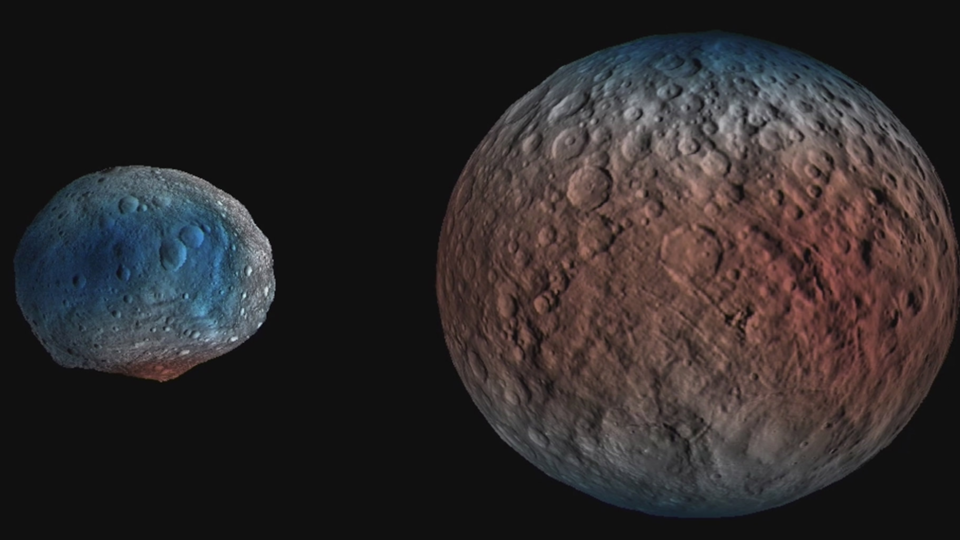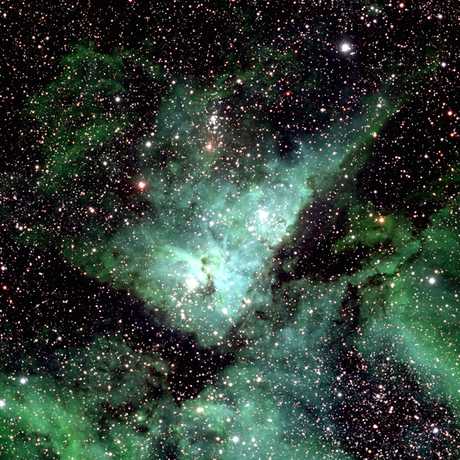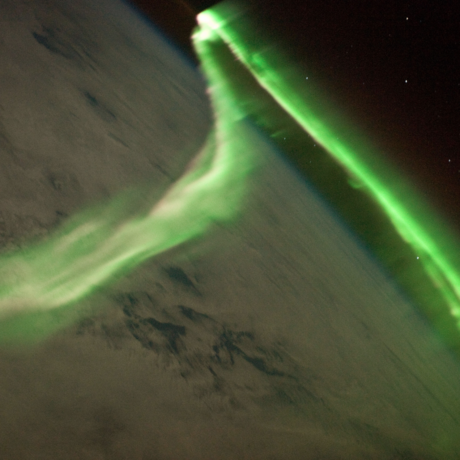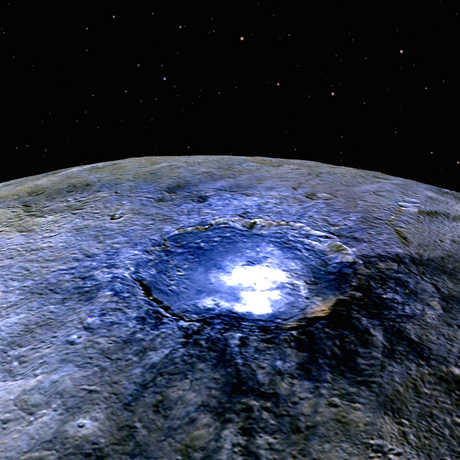Science News
Ceres Is All Wet

Pluto ain’t the only dwarf planet! Although its former planetary status garners it significant affection (mostly from Baby Boomers and Gen Xers who grew up with it in textbooks and on placemats), the dwarf planet Ceres has been getting a bit of love lately, too… And today, at the American Geophysical Union (AGU) meeting in San Francisco, scientists announced that evidence for water at or near the surface of Ceres, with at least one researcher suggesting it’s a promising place to look for life!
This feels like the next step in Ceres’s growing popularity. First off, the 2006 reclassification of Ceres from mere asteroid to (woo hoo) dwarf planet seemed more like a promotion than a demotion (which is how most people perceive Pluto’s reclassification). And then Ceres became the first dwarf planet visited by a spacecraft, when the Dawn mission arrived there in March 2015. Dawn has remained in orbit around Ceres for a couple years now, allowing for an extensive examination of the dwarf planet. (Compare that to the New Horizons mission, which zipped through the Pluto system hardly long enough to say hello.)
Dawn’s long stay is what made today’s announcement possible. By making repeated observations of the dwarf planet’s surface, scientists were able to tease out several lines of evidence that support the existence of water at the surface or just beneath…
Norbert Schörghofer from the University of Hawai‘i showed images of perpetually-shadowed craters in Ceres’s northern hemisphere. As their name suggests, these spots never receive sunlight, with temperatures plunging to –160°C (–260°F) in this permanent night. Schörghofer and his team identified about 600 such spots, covering an area of 2,100 square kilometers (more than 800 square miles). By turning up the contrast on Dawn’s imagery of these cold spots, the scientists found brighter regions in ten of these craters… Ice, perhaps?
Dawn scientists have already learned that not all bright spots on Ceres are made of ice (in fact, the brightest spots, in Occator Crater, are made of salt), so they used spectroscopy to confirm that, indeed, they were looking at water in at least one of the craters.
Any of the water in perpetually-shadowed craters has likely been there a long, long time. But Carol Raymond, Deputy Principal Investigator for the Dawn mission, described a recent flow of ice in Oxo Crater, visible in some images (a result published in Science magazine back in September).
And spectroscopy is not the only fancy tool that Dawn has at its disposal. The spacecraft can also detect gamma rays and neutrons with its aptly-named Gamma Ray and Neutron Detector (GRaND), which is able to tease out the concentrations of various elements in Ceres’s uppermost layer. GRaND data suggest that water is incorporated into the dwarf planet’s mineralogy, which allows Thomas Prettyman, of the Planetary Science Institute in Tucson, Arizona, to make a bolder statement than Schörghofer: “On Ceres, ice is not just localized to a few craters. It’s everywhere, and nearer to the surface with higher latitudes.” This leads Prettyman to support the idea that Ceres has (or at least had) a subsurface ocean.
An ocean? Now we’re talking! The presence of abundant water piques people’s interest because water is a prerequisite for life. All life on Earth requires liquid water, so the search for life in the Universe starts with the search for water.
Raymond called Ceres “equivalent to Europa or Enceladus in terms of its habitability.” Bazinga! Take that, Outer Solar System! Tantalizing evidence has mounted that Jupiter’s moon Europa harbors a subsurface ocean, potentially containing more water than all of Earth’s oceans. And Cassini’s discovery that Saturn’s moon Enceladus has water-rich plumes erupting from its south pole led to further observations suggesting the presence of a subsurface ocean. Now Ceres joins that elite group as a promising place to search for life.
Image: NASA/JPL-Caltech/UCLA/MPS/DLR/IDA/PSI


